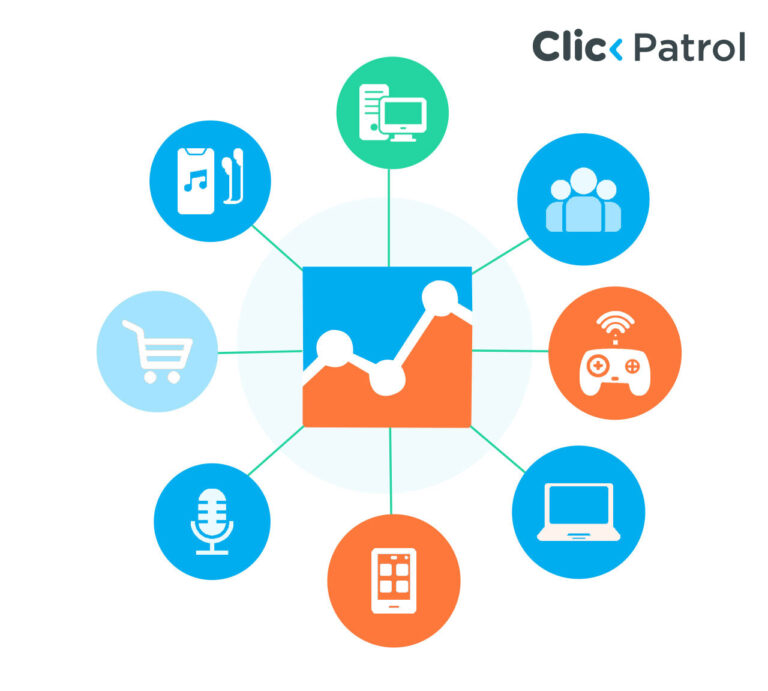
6 Tips To Identify Fake Remarketing Lists
Abisola Tanzako | Aug 27, 2024

Table of Contents
Should you be worried about fake remarketing lists?
Remarketing is a practical digital marketing approach that enables businesses to target and reconnect with users, potential customers, and individuals who have previously interacted with their website or app. These customers receive personalized ads, increasing sales, fostering brand loyalty, and increasing conversions. Remarketing is increasingly open to manipulation, including establishing and using fake remarketing lists.
This article will explain fake remarketing, help you understand and identify fake remarketing lists, and handle its challenges in the advertising industry.
What is Remarketing?
Remarketing, often referred to as retargeting, is a technique for digital advertising in which a company reaches out to those who have already interacted with it. This enables companies to provide personalized ads to individuals who have interacted with their mobile application or website in the past. Remarketing is based on the fact that client journeys are frequently irregular; most potential consumers visit a website, peruse products, and even add items to their shopping cart before making a purchase.
How remarketing works
Remarketing operates through a combination of tracking technology and ad-serving platforms. The process involves the following steps:
- Pixel implementation: Businesses place a minor code on their website or app, often called a pixel or tag. This code is invisible to users but allows the site to drop a cookie on the user’s browser or device.
- User interaction: As a user, when you visit the website or app, the pixel is triggered, and the user’s information is added to a remarketing list. This list can be segmented based on user actions, such as viewing particular products or abandoning a shopping cart.
- Ad network integration: The remarketing list is then integrated with an ad network, such as Google Ads or Facebook Ads. These networks have partnerships with numerous websites and apps where they can display advertisements.
- Ad serving: When users on the remarketing list visit a website or app within the ad network, they are served with targeted ads related to their previous interactions with the original business.
- Conversion tracking: If the user clicks on the ad and completes a desired action (such as making a purchase), this conversion is recorded, allowing businesses to rate the effectiveness of their remarketing campaigns.
What are fake remarketing lists?
Fake remarketing lists are artificially generated or manipulated collections of user data that inaccurately represent genuine website visitors or potential customers. These lists are generated through fraud and serve various purposes, including skewing advertising metrics, draining marketing budgets, or manipulating ad auctions. Unlike legitimate remarketing lists, which compile data based on real user interactions, fake remarketing lists can include bot-generated data, purchased or stolen user information, fabricated user profiles, and compromised device data.
Impacts of fake remarketing lists
These immediate and long-term impacts affect various aspects of marketing strategy and business operations.
1. Wasted ad spend: Fake remarketing lists cause businesses to target non-existent prospects, resulting in clicks and impressions that cannot convert. This drains marketing budgets without generating any real return on investment.
2. Skewed analytics: Campaigns targeting fake remarketing lists often show inflated or inaccurate performance metrics. This distortion can lead to misguided strategic decisions and flawed market insights, potentially affecting long-term business strategies.
3. Reputation damage: If discovered, even the unintentional use of fake remarketing lists can severely damage a brand’s reputation. It ruins consumer trust and can lead to negative publicity, affecting the company’s standing in the industry.
4. Legal and compliance risks: Fake remarketing lists can inadvertently violate data protection laws like GDPR or CCPA. This can result in hefty fines, legal consequences, and potential breaches of contracts with ad platforms or clients.
5. Poor user experience: Real users may be overexposed to irrelevant ads due to the artificial inflation of audience sizes.
6. Market distortion: Widespread use of fake remarketing lists can skew industry benchmarks and create an unfair competitive landscape. Companies using fake data may gain an undeserved advantage, while those adhering to ethical practices may need help to compete on seemingly uneven ground.
How to identify fake remarketing lists
Detecting fake remarketing lists requires data analysis, pattern recognition, and vigilant monitoring. Here are a few methods and indicators that can help identify potentially fake remarketing lists:
- Unusual performance metrics: Look for abnormally high click-through rates (CTR) or conversion rates that seem too good to be true. Genuine user behavior typically shows variations, while fake remarketing lists often display consistent, unrealistic performance across all segments.
- Traffic pattern analysis: Monitor for sudden, unexplained spikes in traffic or list growth. Legitimate traffic usually follows predictable patterns with natural daily or weekly fluctuations.
- Geolocation inconsistencies: Check for large numbers of users from unexpected geographic locations. If your business primarily serves a specific region, many users from unrelated areas could signal fake remarketing list entries.
- Device and browser inconsistencies: Avoid overrepresenting outdated browsers or operating systems. Fake remarketing lists often need more diversity in device types seen in genuine user groups.
- Engagement depth analysis: Fake entries often show superficial site engagement, such as visiting only landing pages without exploring further or lacking expected user journey patterns like add-to-cart actions.
- Time-based inconsistencies: Look for user actions occurring at improbable times, like consistent activity during typical sleeping hours or unrealistically quick progression through expected user journeys. These patterns often indicate automated or fake behavior.
How to prevent fake remarketing lists
- Implement strong verification: Use CAPTCHAs or similar challenge-response tests to verify human users during sign-ups or interactions. This helps filter out bot-generated traffic and ensures that only real users are added to your remarketing lists.
- Regular audits and cleaning: Conduct frequent, systematic reviews of your remarketing lists. Look for suspicious patterns, inconsistent data, or unusual growth spikes. Implement automated systems to clean and validate list data continuously.
- IP and device fingerprinting: Use technology to track and analyze the IP addresses and device characteristics associated with list entries.
- Cross-reference data sources: Compare your remarketing list data with information from other channels, such as CRM systems, email engagement, or social media interactions.
- Implement strict data collection policies: Clearly define and enforce policies on collecting and using user data. This includes obtaining proper consent, implementing secure data collection methods, and regularly training staff on best practices and the importance of data integrity.
- Employ advanced analytics: Utilize machine learning algorithms and AI-powered tools such as ClickPatrol to detect user behavior and list composition inconsistencies; identifying patterns indicative of fake entries, allowing for prompt removal or investigation.
Best practices for remarketing lists
Implementing best practices enhances the effectiveness of remarketing campaigns. Here are a few remarketing best practices:
- Segmentation: Put your audience into groups based on their behavior, interests, or where they are in their customer journey. This approach helps you deliver more tailored and relevant ads, which can boost engagement and increase conversion rates.
- Frequency capping: Limit how often a user sees your ads within a specific period. Setting a limit helps prevent overexposure, which can annoy potential customers and harm your brand’s image.
- List hygiene: Regularly clean and update your remarketing lists. Remove inactive users, verify contact information, and ensure data accuracy. This improves campaign efficiency and maintains list quality.
- Cross-channel integration: Align your remarketing efforts across multiple channels (e.g., display ads, email).
- Exclusion lists: Create lists of users to exclude from specific campaigns, such as recent purchasers or unsubscribed individuals. This prevents redundant messaging and respects user preferences, optimizing ad spend and the user experience.
- Dynamic content: Use dynamic remarketing to show users specific products or content they have previously interacted with. This personalization increases relevance and the chances of conversion, making your remarketing efforts more effective and engaging.
The threat of fake remarketing list
The threat caused by fake remarketing lists is a significant challenge in the ad industry. The motives behind fake remarketing lists are wild, ranging from financial fraud to competitive sabotage, making it a complex issue. Its impacts are far-reaching, affecting individual businesses, customers, and the digital marketing industry. It ruins trust in the digital advertising industry, ranging from a waste of advertising budgets to damaging reputations.
However, by understanding the risks, identifying and implementing significant prevention measures, and maintaining best practices for remarketing lists, businesses can significantly mitigate the risks associated with fake remarketing lists, protect their investments, maintain brand reputation, and achieve optimal campaign results.
FAQs
Q.1 How can I tell if fake data have compromised my remarketing list?
Look for unusual patterns in your campaign performance, such as high click-through rates with low conversions, traffic from unexpected locations, or sudden spikes in website visitors.
Q.2 How often should I audit my remarketing lists?
It is recommended that you audit your remarketing lists at least quarterly. Still, more frequent audits (monthly or even weekly) may be necessary for high-volume campaigns or if you suspect invalid activity.
Q.3 Can fake remarketing lists affect my website’s SEO?
No, fake remarketing lists do not directly affect your website’s SEO. However, the bot traffic and unusual user behavior patterns associated with fake lists can skew your site’s analytics and indirectly influence SEO-related decisions.





